This will help you analyze your game and find out important things. How many forehands do you play in a match? How many backhands? Where do you hit the ball on the racket? How fast do you swing your racket? All these questions and many more can be answered by the right smart tennis sensor.
Listen to the audio version of this article.
Table of contents
Tennis sensors variants
Modern smart tennis racket sensors use apps and Bluetooth to connect to your smartphone. There are 3 different ways a sensor connects to your racket and how it measures and analyzes your tennis game. The goal of our test is to find you a product that will help you on your way to better tennis. All three options do just that:
Plugin Sensor
The sensor is inserted under the grip cap. This variant is the most common and is used by e.g. HEAD or Coolang. The advantages of this variant are obvious. If, for example, the string breaks, you can simply put the sensor on your second racket and continue to measure your game. However, there are also disadvantages. Some players are bothered by the sensor under the grip cap while playing. However, this problem usually only occurs when you hold the racket really deep in your hand. Another problem is compatibility. Not every sensor can be put on every racket. You should check beforehand whether your racket is compatible with your new sensor and if you change the racket brand at some point, you should of course continue to check whether the sensor fits.
Integrated Sensor
In this variant, there is no sensor at all, which must be purchased to the racket. The racket itself already has an integrated sensor. This variant was first popularized by Babolat with the Babolat Pure Aero Play. The advantage of this variant is that the racket does not feel any different on the handle than if a sensor was put on it. The disadvantage, however, is that if the string on this racket breaks, you no longer have a “sensor racket”. (Unless you’re swimming in money like Scrooge and own several rackets with integrated sensors).
Smart Courts
This variant is not really what you would call a classic “tennis sensor”, but the point here is to find out more about your tennis game. These are so-called “Smart Courts”. These are tennis courts that have a built-in camera system and a whole lot of artificial intelligence (AI). One of the best providers with strong growth within the German tennis world is Wingfield. This is then used to determine, for example, the number of rallies played, forehands, backhands, but also the score of the match. Wingfield is able to determine some values that traditional sensors cannot obtain. This includes for example the placement or the height of your shot. A Smart Court is rather designed to help you improve your strategy and find weaknesses as well as strengths with the help of some statistics. However, if you are looking for specific feedback on your stroke technique and don’t want to watch videos of yourself, you are in good hands with a classic sensor (variant 1+2).
Best sensors comparison table
Best Plugin Sensor

STA 4.0 Smart Tennis Training Swing Analyzer

- App is compatible with iOS and Android
- Can be used with all tennis racket brands
- Weighs only 6 grams
- 6 hours battery life
- Measures just about all stroke data
- Calculates calories burned
- 30-day money back guarantee
- 4-week workout program worth $100 included
- RRP of 250$ very expensive, but fortunately there are coupons (love15) and sales 😉
- Some players are bothered by the sensor at the end of the handle
Best Tracking App for Tennis

Swing Vision A.I.

- Only download of an app necessary, as smartphone is usually already available
Very intuitive operation of the app
Filter function to see specific shots on video
Integrated linesman
Set up in 30 seconds
Challenge function (Hawk-Eye)
All conceivable statistics are recorded
30 hours of cloud storage per month
- Currently only for iOS (iPhone)
- Annual subscription
Bester integrated Sensor

Babolat Pure Aero Play

- No need to plug in a sensor
- No disturbing sensor at the end of the handle
- Precise measurement of the hit point
- Many different statistics visible through app
- If the string breaks, the sensor cannot be used until the racket is restrung
- Hard to buy. Often sold out
- Outdated sensor and technology compared to modern clip-on sensors
Best Smart Court for Clubs

Wingfield Smart Court

- Very intuitive app
- Countless, insightful statistics
- Distinguishes between all types of shots in the statistics
- Measures data that a normal sensor on the racket can’t see: where your shots land (in the field, in the net or out) and ball height above the net
- Ready-to-use drills to monitor player improvement over the long term
- Integrated video recording of your technique
- Automatically created highlight video
- Official LK matches possible
- Very expensive for individuals
- Does not measure the point of impact of the ball and bat (but can be seen on video)
- Requires a stable internet and power connection
Best Sensor for Juniors
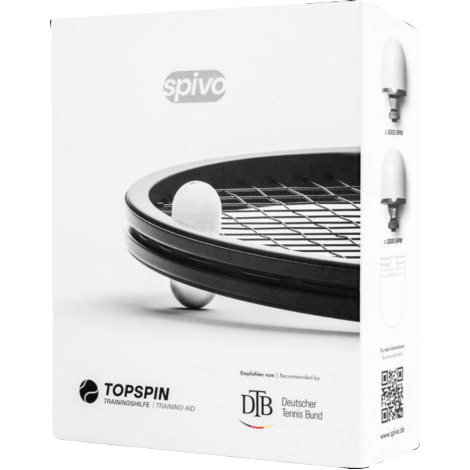
Spivo

- Ideal for teaching beginners of all ages an understanding of topspin
- Brings gamification to the tennis court very cheap and fast
- Principle is very easy to understand
- Brilliant for improving the most important basics
- No measurement of beat data
- Feedback only via sound, not via statistics of an app
What does a smart tennis sensor measure?
Contact Point
A good tennis sensor, such as the Babolat Pure Aero Play, shows you where you hit the ball on your racket. It differentiates between the sweet spot (center), left, right, top and bottom. A percentage is then displayed over this region of the racket, hopefully showing you that you are hitting over 80% of your shots in the sweet spot.
Spin
One feature that I personally find very interesting, since I unfortunately tend to slice a lot with the backhand, is the measurement of spin…. Here the sensor measures for each stroke whether it is a slice, topspin or a ball without spin (aka. a board). Do you lose a match e.g. because your opponent came to the net very often and your evaluation shows that you played a lot of slice? Here a topspin lob or passing ball might have been the better choice. This could be the tip to be more successful against net players next time.
Shot type
Modern tennis (Zverev, Berrettini, Ruud, Alcaraz) has consisted of a simple game plan for some time now. A quick serve and if the ball comes back, finish the rally with the forehand. Many players even take big detours here, just to be able to play a forehand even from the backhand corner. A tennis sensor can show you exactly what your forehand to backhand ratio looks like. You might find that your rallies are taking too long on your own serve. Maybe you play a lot of forehands, but still feel that you don’t have an advantage in the rally. All these evaluations are possible with a tennis sensor.
Playing time
Another advantage of a sensor is the measurement of the match duration. Most tennis sensor apps allow you to differentiate between the match and the match.
Stroke count / strokes per minute / longest rally
All sensors I tested count the number of beats and even the number of beats per minute. So if you want to train more intensively, you just have to make sure that this value gets bigger. That’s where the break on the bench has to be shortened. When you play a match, the longest rally is also displayed in the evaluation.
Placement
A smart court can show you where your balls land via its camera system. Most tennis fans already know such statistics from TV. You can then clearly see a strong distribution of your own strokes, e.g. on the opponent’s backhand side. This statistic often shows the missing length of some strokes. In my opinion, one of the most important statistics you can get about your own game.
Height
Another value that is very interesting, but that only smart courts can display, is the height of your own shots. Most amateurs would be surprised here how high pros play over the net on average. This is mostly because just about every pro has quite a bit of topspin in their shots.
Shot statistics
Every tennis fan knows this statistic from TV, but usually has no idea what their own looks like. The stroke statistics show you the percentage success of the different strokes. For example, what is your first serve percentage? If it is below 50%, you should certainly work on your technique. Do you hit 95% of your first serves? Then you should work on your tempo and increase the risk of your serve.
5 Best Tennis Sensors 2024
Smart Tennis Training Swing Analyzer from Supreme Tennis Athletes.
The Swing Analyzer comes with some accessories. Among them, for example, a kind of silicone cap with which the sensor is attached to the handle. As an alternative method, a 3M adhesive tape is also included in the delivery. A charging cable is of course also in the package.
In our test, the Swing Analyzer from Supreme Tennis Athletes proved to be very reliable. With the help of the silicone cap, the sensor was quickly attached to my HEAD Extreme Pro, then a quick wiggle and the sensor is activated. The very easy-to-use app, which by the way can be found in the App Store and Play Store under the name “Smart Tennis”, also recognized the sensor immediately and off it went.
In 200 strokes from the baseline, the forehand and backhand were only swapped twice. Volleys and smashes were recognized correctly every time. Personally, I didn’t mind the sensor as an extension of the grip, but I can understand that players who hold the racket very low in their hands have problems with it.
The app displays various statistics with nice and easy to understand graphics. For example, it is easy to see the number of forehands and backhands played as well as the type of spin. During the test, we were very surprised at how comprehensive the app is. It also includes a video and community function, training aids and numerous other statistics about your own game.
Conclusion:
The Smart Tennis Training Swing Analyzer does exactly what we expected of it and surprises with an extensive, easy-to-use app. For us, the best Smart Tennis Sensor on the market.
PRO
- App is compatible with iOS and Android
- Bluetooth 4.0
- Can be used with all brands of tennis rackets
- Weighs only 6 gram
- 6 hours battery life
- High quality
- Measures all as well as all stroke data
- Calculates calories burned
- 30 days money back guarantee
- 4-week workout program worth $100
- Secure payment method (PayPal)
- Free shipping
CON
- RRP of 250$ very expensive, but fortunately there are coupons (love15) and sales 😉
- Some players are bothered by the sensor at the end of the handle
Swing Vision A.I.
Swing Vision is an app for the iPhone that combines the very latest A.I. technology with the iPhone camera to record your match completely automatically. The genius of it? The app not only records your game on video, creates the statistics known from Grand Slams, but also does the referee for you and tells you whether a ball has landed in the field or not.
Some time ago, you needed a third person to laboriously record your game stats by hand in order to make a meaningful analysis after the match. And once again, the smartphone is replacing that work. Swing Vision admittedly sounded a little too good to be true from my review. An app that does the same thing as Wingfield at its core, but only requires an iPhone?

How does the app work?
Swing Vision A.I. works, as the name suggests, with the support of A.I., or artificial intelligence. The founder is a former Tesla engineer who worked on the Autopilot A.I.. He took the idea of the machine doing the driving and applied it to the lineman. And if you’re going to have artificial intelligence check every ball, why not transfer that data directly into statistics?
Swing Vision is attached to the fence using a smartphone mount, which can be ordered directly. This elevated position makes the recording look like an ATP match on TV, possibly with slightly slower serves. 😉

What does the app measure?
Since the app visually “sees” the entire match or training session via the iPhone, it measures just about everything that can be measured. Stroke speed, match win rate, winners, unforced errors, stroke length and accuracy are just a few of the values that Swing Vision packages into visually very nicely designed statistics. All strokes are classified into the different spin types, such as top spin, slice or flat.

Other functions
All values that are measured are coupled with a video. This means that if I want to know more about my second serve odds, I can filter for exactly that and see every single one of my second serves on video. These filters can also be strung together to get much more specific. As an example, I can activate the “cross court”, “return”, “forehand” and “in the field” filters and see those combinations on video. One feature I would have liked to have on some matches in the past is the “challenge” feature. If you have an Apple Watch, you can view the one shot from the last rally directly on the smartwatch, in slow motion of course, and get the “in” or “out” call from the app.
Conclusion
I was very impressed with Swing Vision, although skepticism was high due to expectations. The app delivers on all promises and did not “call” a single ball incorrectly in my test. The app works so well that already some big tennis organizations, like Tennis Australia, LTA Tennis for Britian, Nike Tennis Camps and the biggest and most important partner ITA (the complete college tennis in the U.S.A.), use the Swing Vision app as an official tool. Looking at the list of investors, you quickly see some big names like Andy Roddick or James Blake, who are well versed in the tennis world and know what it needs. Swing Vision is really too good to be true and gets an absolute recommendation from me! There is also a 30-day trial version that is definitely worth it and you can get it here.
PRO
- Only download of an app necessary, since smartphone usually already exists
- Very intuitive operation of the app
- Filter function to see specific strokes on video
- Integrierter Linienrichter
- Integrated line judge
- Challenge function (Hawk Eye)
- All conceivable statistics are recorded
- 30 hours cloud storage per month
CON
- Currently only for iOS (iPhone)
- Annual subscription
Wingfield
As with any industry, the tennis industry is benefiting from new and exciting technologies. Tennis coaches and players have been looking at a lot of numbers and statistics for years, but they have only been available to the top players. The top players have big budgets and can do the necessary research to get the important numbers about themselves and their opponents. Nowadays, however, with the latest technology, it is finally possible for players outside the top of the world to get important game data. And it works with Wingfield.
I was lucky enough to have a Wingfield box installed at one of our ash courts, so I was able to test the latest Smart Court technology. A Wingfield box costs 6299$ and has a 30-day trial period. An account is free for users and offers almost all features.

Installation of the Wingfield box
The installation is very simple. To turn the court into a smart court, all you need to do is install the Wingfield Box, which includes two cameras, over one of the net posts and also place the included camera on the fence. Now all that’s missing is the power supply and an internet connection and then the data collection can begin.
Login
If you want Wingfield to record you and your shots, you need the Wingfield App and then you have to book the court first. This is often free for members of a club with a Wingfield Smart Court, but can cost a few euros. Next, you need to log in with your smartphone. Just click on “Start now” in your app, click on “Start now” on the Wingfield box, hold the QR code on your smartphone in front of one of the Wingfield cameras and off you go.
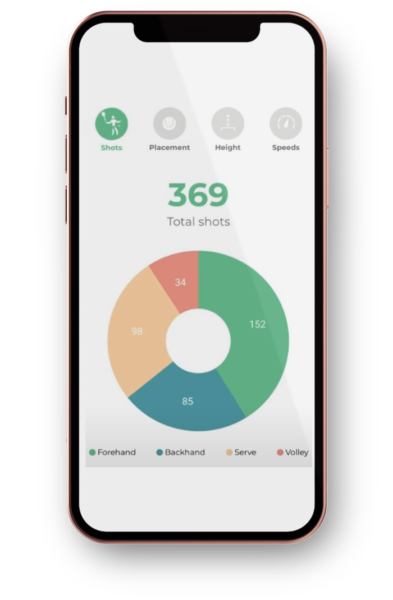
Match Mode, Drill Mode and Freeplay Mode
Behind the “Mode” button there are three different ways of measuring your game.
With the match mode Wingfield measures all data and creates statistics as you know them from Grand Slams. In Match mode it is even possible to play official tournament matches without you and your opponent playing on the club where the tournamet is held.
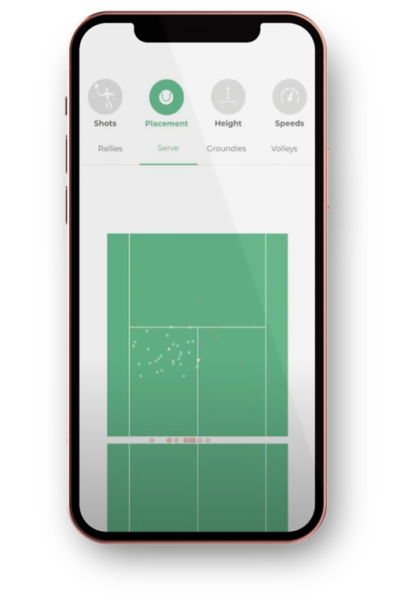
The Freeplay mode, also called Training mode, focuses on improving your shots. The focus here is on accuracy, i.e. where your balls land in the field, ball speed and the height above the net of your played balls.
The Drill mode is designed to monitor your long-term development. Here you perform exercises defined by Wingfield and then receive a so-called “Drill Score” with which you can record your improvements.
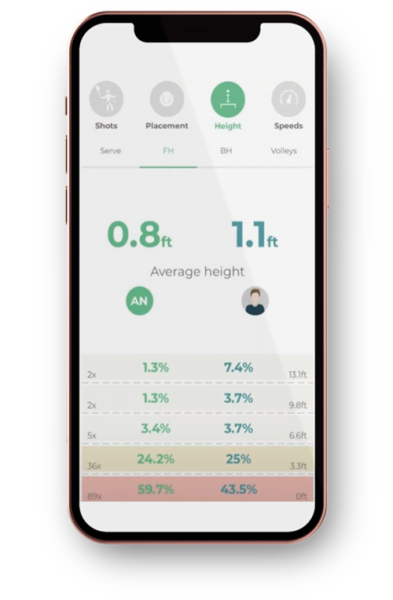
What data does Wingfield measure?
The most important part of becoming a better tennis player with Wingfield is the Wingfield app. With it, you get access to all the data that the Wingfield box has recorded. This includes, for example, the number of forehands, backhands, serves and volleys. Wingfield also tells you how many strokes your rallies are on average (in the following categories: 0-4 strokes, 5-8 strokes, 9 or more strokes). What’s really exciting is Wingfield’s ability to tell you how many of those shots went out of bounds or landed in the court. It’s also smart enough to show you exactly where your balls landed in the field, divided into the different stroke categories of forehand, backhand, volleys, and serves. This is one of the best features if you want to work on your length, for example.

You can even see in the app how high you hit your balls over the net and where your balls hit the net. If you want to work on your stroke speed, a tennis court with Wingfield is just the thing for you, as the ball speeds of all your strokes are recorded. The integrated Wingfield cameras also record your game as a video, which you can watch after your session. This also allows you to identify technical deficits in specific situations. The Wingfield AI also edits your personal highlight video.
There are countless other features that come with a Wingfield Smart Court, but I can’t list them all here. Just check out the official Wingfield website for more information.
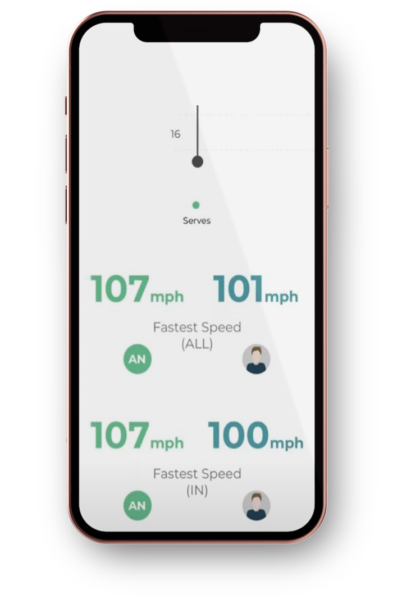
Conclusion
Wingfield seems like an invention from the future and enables match analysis on a level never seen before for club players. All those assumptions, “My firsts just didn’t come today”, “my forehand always got stuck at the edge of the net” can now finally be tested for their validity. How did you score the most points? Which opening did you use most often to lose the point? With Wingfield you can easily find out on your smartphone and adjust your game or strategy. There are certainly still small weaknesses in the determination of your data. For example, I forgot to activate the side switch and thus naturally swapped the data with that of my opponent for two games. But this could also be called human error. The system occasionally has problems recognizing the end of a rally when the ball is simply passed over to the opponent after the “out” call. However, all of these minor issues can be overlooked, as they don’t have a huge impact on Wingfield’s usefulness. Systems like Wingfield that work with great support from Artificial Intelligence will, from experience and logically, get better and better over time, especially as the amount of data collected increases. The guys from Wingfield have really created an impressive tool for tennis players, which does not exist in this form yet. Of course, this is not a purchase that tennis players can just order on Amazon (unless you have a tennis court in your backyard). Wingfield is intended for tennis clubs and training centers. But these will certainly benefit from the Wingfield box. Young and ambitious tennis players are excited about the different features and bring gamification to tennis. A Wingfield Box simply makes the heart of technology nerds like me jump higher.
PRO
- Very intuitive app
- Countless, insightful statistics
- Distinguishes between all blow types in the statistics
- Measures data that a normal sensor on the bat can’t see: where your shots land (in the field, in the net or out) and ball height above the net
- Ready exercises to observe the improvement of the player in the long term
- Integrated video recording of your technique
- Automatically created highlight video
- Official LK matches possible
- 30 days return policy
CON
- Very expensive for individuals
- Does not measure the point of impact of the ball and bat (but can be seen on video)
- Does not measure the point of impact of the ball and bat (but can be seen on video)
What it measures
Despite having a lot of different stats, the app is easy to use and is actually self-explanatory.
Babolat Play measures the power of your shots by recording the speed of your racquet head and how much spin you generate on your shots compared to the top 20 ATP pros.
The app also plots a virtual racket head and shows the percentage of balls hit in each area of the stringbed. So you can clearly see how often you really hit the sweet spot!
The integrated device also tracks what spin you’re hitting, whether topspin, slice or a board. This can be surprising to some players who hit the ball flat more often than they expect!
Some players will be surprised at how often they hit the ball rather flat and without topspin, providing an explanation for all the balls in the net and lack of length. You can identify your own game very well from this data.
One feature that hooked me and got me hooked is the speed measurement of serve and forehand. Since the app makes a comparison to the ATP’s top-20 players here, you have to really step on the gas to even come close to the top-20’s values.
The limitations of Babolat Play
With all the benefits and ingenious features that Babolat Play brings, it’s surprising why we don’t see only tennis racquets with integrated sensors at every tournament. Despite the important data, why hasn’t Babolat Play caught on and why haven’t the other racquet manufacturers followed suit and released their own integrated sensors?
Originally, it looked like Babolat would release every single one of their racquets in a Play sensor variant as well over the next few years. However, we’ve been hearing next to nothing about this technology for some time now.
The Babolat Play tennis rackets are simply too expensive and the sensor technology is clearly outdated compared to the clip-on sensors.
Conclusion
The Babolat Play is a useful device for recording your tennis data, which can give you valuable insights into your game. Recording and analyzing your data can help you understand your game and improve it more easily.
The Babolat Play is an ingenious sensor to determine important data of your tennis game. The pioneer of tennis sensors! However, I recommend buying a Babolat Play racket only if you can get it very cheap (under 80$ sounds like a good deal). Compared to other sensors, such as the STA 4.0, a Babolat Play racket at full price just isn’t worth it these days.
PRO
- No need to plug in a sensor
- No disturbing sensor at the end of the handle
- Precise measurement of the point of impact
- Many different statistics visible through app
CON
- If the string breaks, the sensor cannot be used until the racket is restrung
- Hard to buy. Often sold out
- Obsolete sensor and technology compared to modern plugin sensors
Spivo
Spivo is a completely different type of tennis sensor. It does not work electronically, but manually through very simple physics. Spivo is attached to the racket like a damper and produces a whistle when the racket is moved by the wind. The trick, however, is that this whistle is only generated at a certain club speed and angle of the clubface in relation to the swing path. The louder and clearer the whistle sounds from your club, the more topspin your ball has.
What is the goal of Spivo?
I’m a big fan of the idea because I play a lot of topspin myself and I always advise beginners and advanced players who want to improve their game to play more topspin. Many misses can be corrected by topspin as if by itself. With more topspin, the self-confidence in one’s own strokes increases, because the error rate decreases and very important strokes such as the forehand short-cross.
Spivo Varinten
There are two different Spivo variants available for purchase. Once the Spivo One for children with low speed, which produces a quiet sound and the Spivo Two for adults who want to have really a lot of speed and topspin.
The problem
Especially with fast strokes, most players tend to do without topspin completely and hit a straight “board”. With Spivo, you get instant audible feedback on your stroke and can immediately tell if your follow-through forehand has enough topspin. The goal, of course, is to eventually have a feel for the amount of topspin without Spivo, and it works pretty well.
Conclusion
Spivo obviously can’t compete with a tennis sensor with an app in terms of measuring data and creating statistics. But Spivo doesn’t have to, as it represents rather the minimalist, but promising variant for a very important area. The development and perfection of the absolutely essential basics.
PRO
- Ideal for teaching beginners of all ages an understanding of topspin
- Brings gamification to the tennis court very cheaply and quickly
- principle is very easy to understand
- Ingenious for improving the most important basics
CON
- No measurement of impact data
- Feedback only via sound, not via statistics of an app



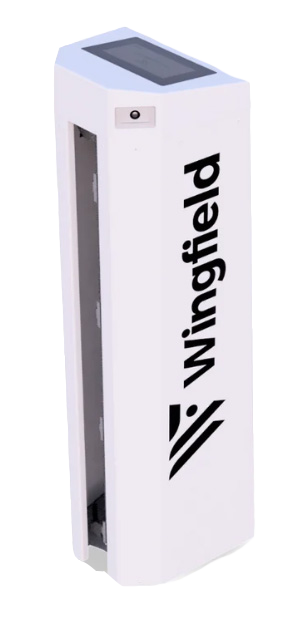
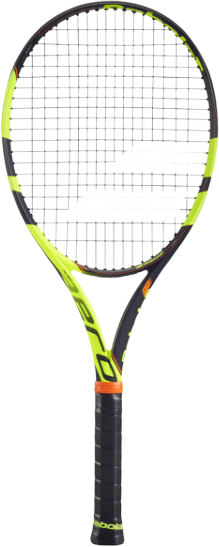


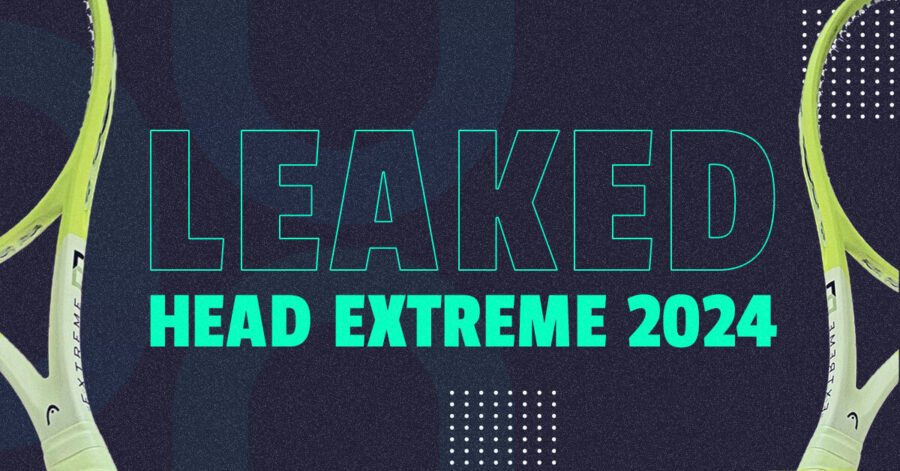
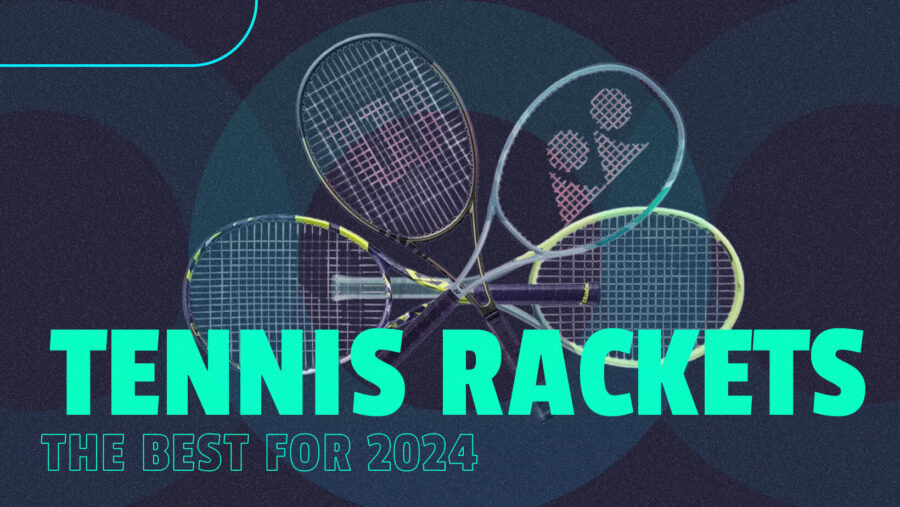
Comments